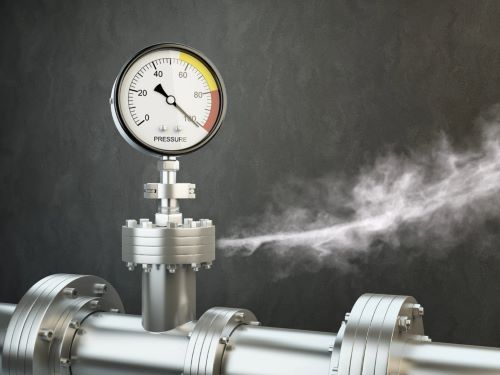

The silent presence of gas leaks turns homes and workplaces into hidden health hazards. Invisible and normally odorless until dangerous leaking gas poses an immediate fire risk and slowly chips away at your long-term health. Each breath in a contaminated space introduces harmful chemicals into your body, interfering with your organs, immune system, and brain.
Prolonged natural gas exposure leads to health problems that don’t always show up immediately but develop over time, catching many off guard. In this post, we uncover seven long-term health risks that every household should be aware of.
1. Respiratory System Damage
Gas leaks often contain methane and trace chemicals such as formaldehyde and nitrogen dioxide. These substances irritate the mucous membranes within the nose, throat, and lungs. Over time, inhalation causes inflammation and constriction of airways. Residents exposed to indoor leaks may develop chronic sinus infections, persistent coughs, or wheezing, even with no history of allergies or asthma.
In some homes with poor ventilation, gas particles settle into fabrics and furniture, allowing continued exposure even after the source stops. Children inhale more frequently than adults, increasing their risk of long-term lung sensitivity or damage.
2. Neurological Impairment
Hydrocarbons found in leaking gas interact with neurotransmitters in the brain. Long-term exposure reduces the brain’s ability to regulate serotonin and dopamine, leading to mood swings, anxiety, and depression. Some people living near leaking pipelines report recurring migraines, tingling in their extremities, or vertigo.
Multiple low-level leaks in industrial or urban residential areas contribute to “chemical brain fog,” where individuals struggle to complete basic mental tasks and feel perpetually tired without a known medical cause. These effects may result in developmental delays or behavioral changes in children.
3. Increased Risk of Certain Cancers
Gas leaks frequently involve methane, benzene, toluene, and xylene, substances with proven links to cancer. Benzene specifically affects bone marrow function, leading to an increased risk of leukemia. Homeowners living near underground gas lines or using poorly maintained gas appliances may inhale these toxins without detecting any strong odor.
Over the years, exposure accumulates, increasing vulnerability to lung, bladder, and stomach cancers. The latency period between exposure and diagnosis spans years, which makes early detection difficult and strengthens the importance of early preventive measures.
4. Cardiovascular Stress
Exposure to carbon monoxide present in gas leaks displaces oxygen in the bloodstream. This forces the heart to pump harder to supply oxygen to the organs. After minimal exertion, people with prolonged exposure notice increased palpitations, irregular heartbeats, and chest tightness.
Prolonged oxygen deprivation leads to structural changes in the heart muscle, especially in elderly individuals or those with pre-existing cardiovascular conditions.
5. Hormonal Disruption
Gas leak byproducts interfere with receptors that regulate hormone signaling. Chemicals like ethane and propane act as endocrine disruptors. These interfere with thyroid activity, slowing metabolism and causing symptoms such as rapid weight gain, chronic fatigue, and menstrual irregularities.
Men exposed in the long term may experience reduced testosterone levels and decreased libido. Fertility clinics have reported correlations between household gas exposure and lower IVF success rates. Unborn children exposed during pregnancy face developmental hormone imbalances that increase their risk of obesity, diabetes, and reproductive issues later in life.
6. Organ Toxicity
The liver and kidneys act as the body’s natural detox centers, but sustained chemical exposure forces these organs into overdrive. Prolonged inhalation of compounds such as butane and hexane results in microscopic damage to liver cells, impairing their ability to break down waste products.
Blood tests in exposed individuals often show elevated liver enzymes and early signs of toxicity. Kidneys begin to retain waste instead of excreting it efficiently, leading to swelling, high blood pressure, and difficulty regulating electrolytes. These signs typically emerge subtly, masked as common fatigue or bloating.
7. Immune System Suppression
Gas leaks compromise bone marrow function, where white blood cells originate. As the production of these cells slows, the body’s defense against common colds, bacterial infections, and viruses weakens. Individuals exposed to it for a long time find themselves fighting off infections that others recover from quickly.
Chronic exposure also triggers inflammatory responses that confuse the immune system, leading to autoimmune reactions such as eczema, lupus-like symptoms, or joint inflammation. In some cases, even vaccines lose effectiveness as the body’s immune memory fails to respond appropriately. Long-term exposure to leaking gas quietly and steadily transforms the body from the inside out. While a faint hiss or unusual odor may seem a minor inconvenience, the consequences stretch far beyond the obvious.


